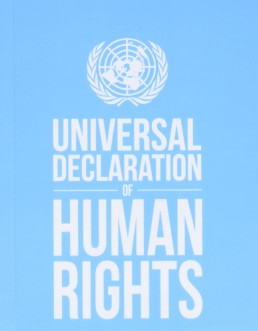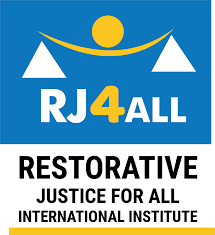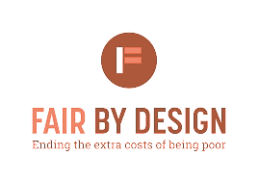Proposals for a new Bill of Rights: what would it mean for children living in poverty in London?
Katherine Hill, 4in10’s Strategic Manager, takes us through the issues:
The story of Human Rights Act (HRA) reform has been a long and somewhat torturous one. Governments of various guises have been consulting on what changes might be needed since the mid-2000s, only a few years after the Act came into force. While the content of these proposals has changed over time the one constant has been that those who have made the effort to respond diligently to each round of consultation have almost unanimously concluded that there is no solid case for reform; the Act is doing the job it was intended to do, effectively defending ordinary citizens against the exercise of excess power or neglect by the state.
Most recently the Independent Human Rights Act Review (IHRAR) set up by the Government to take (yet) another look at the Human Rights Act reported that, “[t]he vast majority of submissions received by IHRAR spoke strongly in support of the HRA.” And the separate but concurrently running inquiry carried out by the cross-party Joint Committee on Human Rights concluded: “[t]o amend the Human Rights Act would be a huge risk to our constitutional settlement and to the enforcement of our rights”. Why, then, has the Government now published proposals for wide-ranging and significant changes to the way the Act works? We all know that evidence-based policy is out of fashion, but this seems to have gone one step further. It is embracing policy in that is in direct contradiction with the evidence. This is policy driven by ideology pure and simple.
At this, the temptation may be to throw up our hands and leave the beleaguered Human Rights Act to the hands of fate. What is the point of repeatedly making the case for it, only to be ignored? There are two reasons. Firstly, we must recognise that the case for effective human rights is one that needs to be constantly remade, it will never be a case of job done. Human rights, if they are to mean anything, must be a statement of collective values, an expression of our shared commitment to freedom, respect, equality, dignity and autonomy for all humans. For these to be transmitted from generation to generation there needs to be ongoing dialogue about them and what they mean in our modern world. Shying away from that conversation leaves the legal mechanisms we have for defending our rights vulnerable to attack.
Secondly, and more pragmatically, if we do not argue and win the case for the Human Rights Act, and these current proposals for reform come into force, ordinary citizens may lose the means to enforce their rights effectively. For those 4in10 exists to advocate with and for, families and children experiencing living in poverty in London, the consequences are potentially very serious indeed.
The proposed reforms aim in multiple ways to make it harder for people to enforce their rights. These include a proposal to introduce of a new step in the legal process requiring individuals to demonstrate that they had experienced “a significant disadvantage” before their case can go to court. Legal action can already only be taken if the individual is the “victim” of a human rights breach, so it is hard to view this as anything other than an attempt to deter people from enforcing their rights by adding a further legal hurdle to the process. This will disproportionately affect those experiencing poverty who are more likely to have their rights breached in the first place. To give just one example, children in the lowest income quintile are 4.5 times more likely to experience severe mental health problems than those in the highest.[1] It follows that some of those are more likely to experience mental health detention too, where their human rights – including the right to respect for private and family life (article 8) and right to liberty and security (article 5) – will be engaged. If children in these circumstances, who already find it very difficult to access justice, have to jump through additional hoops it will further diminish their ability to challenge their detention where they believe it is an unlawful breach of their human rights.
The Government’s proposals would introduce a two-tier system for enforcing human rights by restricting their use in the domestic courts by certain groups, including “foreign criminals” and those accused of illegal migration. This makes a mockery of the values underlying the whole notion of human rights. These are rights that everyone is entitled to enjoy regardless of economic or immigration status, gender, sexuality, disability or anything else. It follows that all should have equal access to the law to enforce them. If they don’t, the impact will be felt most by those on the margins, and especially the poorest children in our society. If the Government is more easily able to deport people without them being able to challenge this on the grounds of right to respect for private and family life (article 8), families may face the sudden loss of their main breadwinner, and children living in already financially precarious situations will be plunged into deeper poverty.
A key issue the Government seeks to address through its plans is that it wants to stop what is termed ‘judicial overreach’, that is the courts getting involved in decisions that are more properly the role of Government and Parliament, accountable as they are to the people. High on the list of things the Government believes it is best placed to make decisions about is the allocation of social and economic resources and it is particularly aggrieved when it thinks the courts seek to interfere in these issues.
The reality is however, that there is little evidence that this is what the courts in the UK are routinely doing. Recent cases that have examined welfare policy have often been unsuccessful, for example a challenge to the two-child limit (which does not allow welfare payments to be made to third and subsequent children) on the grounds that it discriminates against lone parents. The courts found these to be matters on which Parliament has deliberated and struck an appropriate balance. This may be very disappointing for those of us who believe that there should be a wider role for human rights in these matters, and that the right to an adequate income, a safe and warm home and access to healthy food meet basic human needs that should be enforceable whatever the colour of government in town. But it certainly does not support the Government’s argument for the need to curtail the powers of the courts, and the rights of individuals, as is proposed.
Over the longer-term we need to build the case and argue robustly for more comprehensive protection of these important economic, social and cultural in our domestic legal framework, as an essential element of any strategy to eradicate poverty. But first, and most urgently, we need to protect what we already have in the form of the Human Rights Act, as failing to do so will have the greatest impact on those who most need to rely on it.
To find out more about the Government’s plans to reform the Human Rights Act and to find out how you can respond to the consultation visit the British Institute of Human Rights dedicated web pages where you can find lots of easily digestible information and advice.
[1] Gutman, L., Joshi, H., Parsonage, M., & Schoon, I. (2015). Children of the new century: Mental health findings from the Millennium Cohort Study. London: Centre for Mental Health.
4in10 Newsletter 20/01/22
Read the latest 4in10 network newsletter here.
Information, training, resources and much more.
Spotlight on Restorative Justice for All
Spotlight Interview with 4in10 Member RJ4A
- How are you helping to tackle child poverty in London?
The Restorative Justice for All International Institute (RJ4All) is a charitable, user-led NGO with a mission to address poverty and advance community cohesion and human rights. We redistribute power in a more equal way by delivering social justice and poverty relief projects, educational programmes, intercultural dialogue, internships and high-quality volunteering opportunities to the most marginalised groups of society. Child poverty in London is not only a reality, but also a persistent societal failure. That is why we put emphasis on making a difference by providing local direct services from the RJ4All Rotherhithe Community centre, where we are based. It is not possible to achieve equality and community cohesion, if poverty and disadvantage are not rooted out first.
Since COVID19, we prioritized poverty relief and wellbeing projects, focusing on making a change locally and by prioritizing services for groups who are faced with extra challenges. One of these groups are children and young people in the South East London area where we are based. These local services are provided from the RJ4All Rotherhithe Community Centre, which has become a hub of community empowerment and cohesion. It offers a food-bank, a community fridge, free sport classes, a community library, COVID19 tests and educational workshops to children, young people and professionals. It is also a safe place for anyone who wants to pop in for a coffee, use our facilities or just chat with our interns, volunteers and team.
- Share with our members something positive about your organisation’s achievement or service.
Last year, RJ4All was the recipient of the Best Charity Award from the Southwark Business Awards due to its youth-led COVID-19 poverty relief project “You are not Alone”. During the pandemic, children and young people came together and with the support of the RJ4All Director, Dr. Gavrielides, they set up the project to help their peers who were struggling. The project started with a small grant that RJ4All managed to secure, providing food and PPE to children, young people and their families. It then quickly expanded across London, resulting in generating over 500 volunteer placements, a mental health helpline run by children and young people for children and young people, online courses and a bank of online resources, internships and online fitness classes. The project is now under the auspices of the independent youth-led FRED campaign, hosted by RJ4All. Dr. Gavrielides also received the Southwark Civic Award 2021 as a result.
- What can other network members learn from you or find out more about through you?
We encourage members to learn more about restorative justice and its underlying value of power sharing. Restorative justice is not just a justice practice. It is an ethos and a methodology for carrying out projects, or even how to lead our lives. We would be happy to introduce members to restorative justice and we encourage them to take our free CPD certified courses by visiting https://rj4all.uk/online/
- What would most help you achieve your goals?
Our mission is to address poverty and advance community cohesion and human rights. We do this by using the power of education, sports and art, as well as the practices and values of restorative justice including power sharing, fairness, equality, dignity and respect. We start locally and thus any support for our community service provision in SE16 London would be much appreciated. Our food bank and community fridge are always in need for stocking up!
- Why did you join 4in10? What do you enjoy about being part of the 4in10 network?
We were very pleased to join the campaign in October (London Challenge Poverty Week), and we very much enjoyed working with the network given that we share similar values and goals. We often operate in silos making our work harder and our impact smaller. By connecting our minds and hearts, we come closer to addressing power abuse and the inequality that impacts on our children.
4in10 Newsletter 6th Jan 2022
Read our fortnightly newsletter here with news, calls to action, funding, jobs, free training and more. To receive this in your inbox every other Thursday just complete our . Everything is completely free!
4in10 Newsletter 09/12/21
4in10 Newsletter with data, reports, research, job vacancies, funding oopportunities and more. To read this issue click here. To receive the newsletter fortnightly straight to your inbox, join 4in10, London's child poverty network. It is completely free and gives advance notice of training and events and much more.
Timewise Video on Flexible Working
Timewise Webinar
Can flexible working help towards supporting low paid workers to progress and move out of poverty? Presenting the flexible working index and a discussion about flexible working as a real alternative.
https://timewise.co.uk/article/flexible-job-index-2021-a-timewise-roundtable/
Putting the onus on employers to enable all jobs to be flexible and for flexibility not to be a barrier to progression or keep people (mostly women) trapped in low paid work.
Human Rights Perspective on 'Levelling Up'
4in10 sees poverty as an abuse of human rights. As Nelson Mandela put it:
'Overcoming poverty is not a gesture of charity. It is an act of justice. It is the protection of a fundamental human right, the right to dignity and a decent life. While poverty persists, there is no true freedom.'
Equally Ours have published an excellent, evidence based report written by Belinda Pratten, Levelling Up: Firm Foundations.
Written from an equalities and human rights perspective it covers work, social security, social care, civil society and housing as well as the wider issues of public procurement and investment. A great Christmas holiday read.
Fair By Design Blog. Innovation, fairness and a just transition to Net Zero
Fair By Design – The Poverty Premium.
Martin Coppack is Director at Fair By Design and Carl Packman is Head of Corporate Engagement and this article originally appeared on the Social Market Foundation website.”
By their very nature, essential services such as energy, credit, and insurance, are needed by everyone. However, these markets have been designed in a way that results in many people being treated less fairly. As Fair By Design’s research shows, poorer people pay more for products and services than those who are better off – known as the poverty premium.
The University of Bristol found that the poverty premium affects almost every low-income household, costing an extra £490 a year, on average. Low-income households experience the poverty premium in the energy market in a number of ways. They may use pre-payment meters for domestic fuel rather than paying by direct debit, or may prefer to pay on receipt of a bill to help manage a budget. Many low-income households are also not switched to the best fuel tariffs, which is also a poverty premium. These households are less likely to switch sometimes because they have other more pressing issues to deal with, which manifests in less capacity to engage in the market, which is known as the ‘scarcity mindset.’[1] It is not the same as consciously avoiding actions that might upset tight financial control, such as switching providers. They also may not be able to switch because of higher rates of digital exclusion, owing to a lack of ability or equipment to go online.
Research commissioned by Fair By Design found that people with certain protected characteristics are more likely to be paying a poverty premium, even when compared with low-income households as a whole. People from Black, Asian, and other ethnic minority households are more likely to be paying extra costs for energy, and paying on receipt of a bill, rather than by direct debit, which is usually cheaper. Single parents are more likely to pay for energy through more expensive prepayment meters. These groups are more likely to be in low-paid or insecure work and therefore need flexible payment methods to help keep control of their finances. Disabled people are more likely to be paying by either of these methods, than non-disabled people.
The poverty premium is particularly pertinent at the moment since poorer households suffer disproportionately in hard times. There are now millions more people facing economic hardship as a result of the pandemic. The ongoing gas price crisis means that the cost of heating the average home could also double.
Why does the poverty premium exist?
Essential products and services are too often designed for ‘super consumers.’ These are people who never become ill, always have a steady income, are able to understand complex terms and conditions and always have the time and technology to easily find the best deal. This is not a reality for everyone. There is a disconnect between social and regulatory policymakers and people’s lived experiences of poverty and exclusion, and a belief that a market based on competition benefits all consumers. In practice, firms compete for the most profitable and engaged consumers. It means that for many people products and services do not meet their needs or even that they are excluded altogether.
Inclusive Design: Understanding how different groups and consumers experience products
Across essential services regulators, inclusive design is increasingly recognised as a way to ensure markets are fair and inclusive, especially for consumers in vulnerable circumstances and on low incomes.
Inclusive design is a toolbox that helps design products and services that are accessible to as many people as possible. It is different to ‘traditional’ market research in that it is not simply about testing pre-existing solutions and hypotheses. It starts by talking to people with additional needs to understand the problems from their perspective, and designing from there. Rather than shaping the consumer around the product or service, firms start with people where they are, and co-design with them. This is especially important as the energy system becomes increasingly digitised, and we transition to net zero.
Instead of designing for a mythical ‘average’ user, firms should therefore understand people’s actual experiences and how these might put them at a disadvantage. In other words, what are they vulnerable to, and why?
There are huge benefits to firms from adopting an inclusive design approach. By involving customers in the process of product design and development, it increases the likelihood of adoption, and reduces the need for solving problems after they occur, through customer service, for example.
The role of government and regulators
At the same time we know that firms will only design inclusively, to a point. There are always going to be some consumers that are deemed less desirable and for whom competition alone will not help. Markets need to be regulated to serve everybody. This means that Government (BEIS) and regulators (Ofgem) should not only be encouraging firms to design inclusively, they should be applying inclusive design principles to their own work. They should shape their own policies around the consumer, especially those most vulnerable and least heard – rather than trying to make such consumers fit their desired regulatory intervention. It is not enough to rely on competition and the belief that empowered consumers drive the market.
For instance, consumers have a role in designing the appropriate policy steps towards decarbonisation. This is very important, since we need to ensure that the cost of the transition to renewable energy sources is not placed disproportionately and unfairly on low income groups. Although many UK households are reportedly willing to accept some increase in their bills to help finance the future energy transition, this will not be possible for all households – particularly those with little slack in their existing household budgets, or who do not own their own home.
Ofgem and BEIS should adopt an inclusive design approach to understanding the needs of all consumers (particularly those on low incomes) and use this approach to help set their priorities, develop and implement interventions, and assess their effectiveness. This means doing things differently, and engaging with low income people directly – placing them at the heart of decisions.
To help with this, Fair By Design, along with our partners Money Advice Trust, has published a practical guide on what inclusive design means and how it can be incorporated into the work of regulators.
The future of price protections
An inclusive design approach to policymaking will help identify where the limits are for the market serving certain groups of consumers, and for whom additional protections – such as price caps and targeted “social” tariffs – are needed.
In a Fair By Design study of low income households accessing Turn2us’ services, researchers compared the costs of the energy poverty premium in 2016 and 2019 to assess the degree to which the retail energy market has changed. [2] While their findings showed the positive impact of regulation, low-income consumers still face excess costs for their energy.
For example, the gap between the Standard Variable Tariff and the best online-only fixed tariff had reduced from £317 in 2016, to £213 in 2019, a reduction of over £100. [3] The gap between the best pre-payment meter tariff and the best online-only fixed tariff had almost halved, dropping from £227 in 2016 to £131 in 2019.[4] This shows a strong correlation between price protections and a reduction in the poverty premium.
This is very welcome news and shows that sensible regulation and a focus on price to protect consumers is achieving good outcomes. The focus now should be on how to narrow the gap even further, to entirely remove the poverty premium, through a combination of inclusively-designed innovations and policy changes.
About Fair By Design
Fair By Design is dedicated to reshaping essential services, such as energy, credit and insurance, so they don’t cost more if you’re poor. People on low incomes and in poverty pay more for a range of products including energy, through standard variable tariffs; loans and credit cards, because of higher interest rates; and expensive insurance premiums, by living in postcodes considered higher risk. This is known as the poverty premium.
We collaborate with industry, government, and regulators to design out the poverty premium. Our Venture Fund provides capital to help grow new and scalable ventures that are innovating to make markets fairer. The Barrow Cadbury Trust runs our advocacy work, and Ascension manages the Venture Fund.
To download the Fair By Design and the money Advice Trust guides on inclusive design visit: https://fairbydesign.com/inclusive-design/ There is one for regulators (and social policy makers) as well as one for firms.
Notes
- [1] Scarcity: The True Cost of Not Having Enough, Sendhil Mullainathan & Eldar Shafir (2011)
- [2] Although average figures of the poverty premium are not comparable across the two studies, due to differences in methodology, the calculation of the premiums remained the same and so costs are comparable.
- [3] Drawn from the average across Big 6 suppliers and across household size.
- [4] Drawn from the average across Big 6 suppliers and across household size.
Support the campaign to keep London's Public Transport flowing.
Keeping the Wheels On
why fair funding for London’s transport system matters for those living on low incomes
Blog by Katherine Hill. 4in10's Strategic Project Manager.
It has been widely reported that Transport for London is facing a funding crisis which will come to a head this week when its current emergency funding deal expires. The causes of this crisis are complex and contested. But what is clear is that unless agreement can be reached quickly, Londoners will soon feel the impact of cuts to the capital’s transport services - and none more so than Londoners living on low incomes.
Child poverty in London is in large measure driven by the sky-high cost of living in the city. In addition to well documented high housing and childcare costs, Londoners also spend the highest amount in the UK on transport (an average of £137 a month).[1] If fares have to be increased to plug holes in Transport for London’s budget, then this will be yet another additional cost that many families struggle to meet.
As our ‘Flying Against Gravity’ report published during this year’s London Challenge Poverty Week shows, access to affordable transport is essential to ensuring that families can get to work, take children to school and visit hospitals.[2] People told us they were concerned about affordable transport because it is an enabler, without it they miss out on things such as jobs, social interaction, and education. One young man explained how not being able to afford to use the transport network leads to a sense of exclusion:
“London is meant to be someone's home, yet you have all of these boundaries and factors that just stop working class people from accessing certain spaces.” Joshua, aged 18-20, Enfield.
Without money or access to transport, people are denied their right to educational opportunities that otherwise might help them break out of the poverty cycle:
“I was...having to travel a bus and a train to get to college. So, if I'm honest, I probably went in a couple of days a week. So as a result, I didn't do very well in my A-levels because I was broke. I rarely went in because the money just didn't really stretch.” Rhiya, aged 25-30, Bromley.
In addition to these direct effects on those who are financially struggling, if public transport services are reduced it will also have repercussions for efforts to cut the number of cars on our roads. As night follows day this will mean that the effects of traffic congestion such as air pollution and road danger increase, and we know that these disproportionately affect some groups including those on low incomes.[3]
So, it is critically important that the Government and Transport for London come together this week to reach a funding agreement that will keep our trains, buses, tubes and trams running at affordable cost. Failure to do so will impact on all Londoners, but without doubt, those living in poverty would feel the effect of cuts to services the most. Without affordable public transport, streets will be dirtier and more dangerous for children, schools and jobs will be less accessible to young people, and poorer families will be constrained to small areas of the city. This would be a huge step backwards when what they deserve is a sustainable, inclusive city.
Take action today and support London TravelWatch’s campaign to #keeplondonmoving by taking their quick, easy action here: https://www.londontravelwatch.org.uk/join-the-campaign-to-protect-londons-public-transport/
[1] Fair access: Towards a transport system for everyone, (2019) Centre for London
[2] Flying Against Gravity, (2021) ClearView Research
[3] Fair access: Towards a transport system for everyone, (2019) Centre for London
4in10 Newsletter 25.11.2021
Read our latest newsletter by clicking here.
To receive the newsletter fortnightly to your inbox please send us an email.








